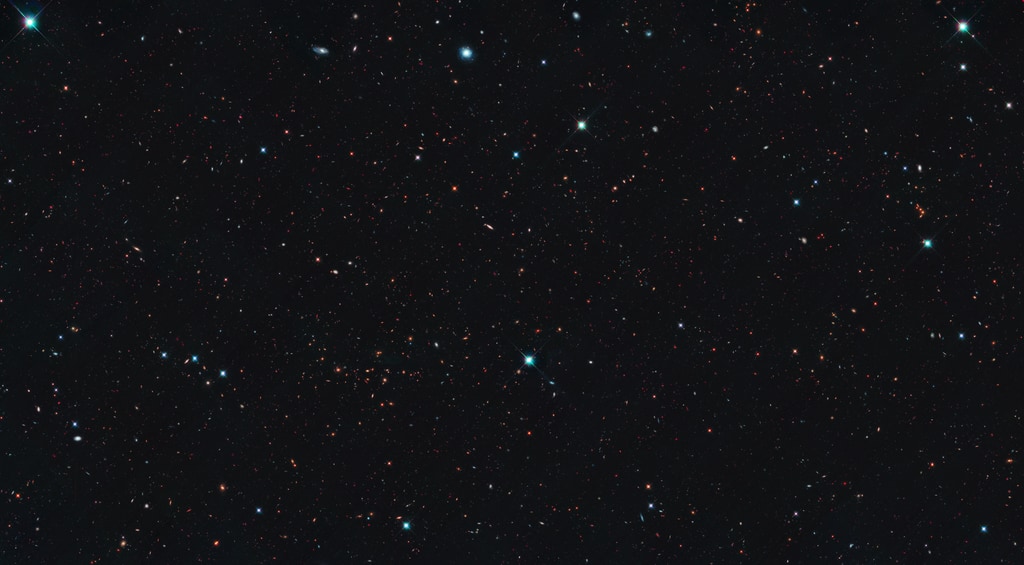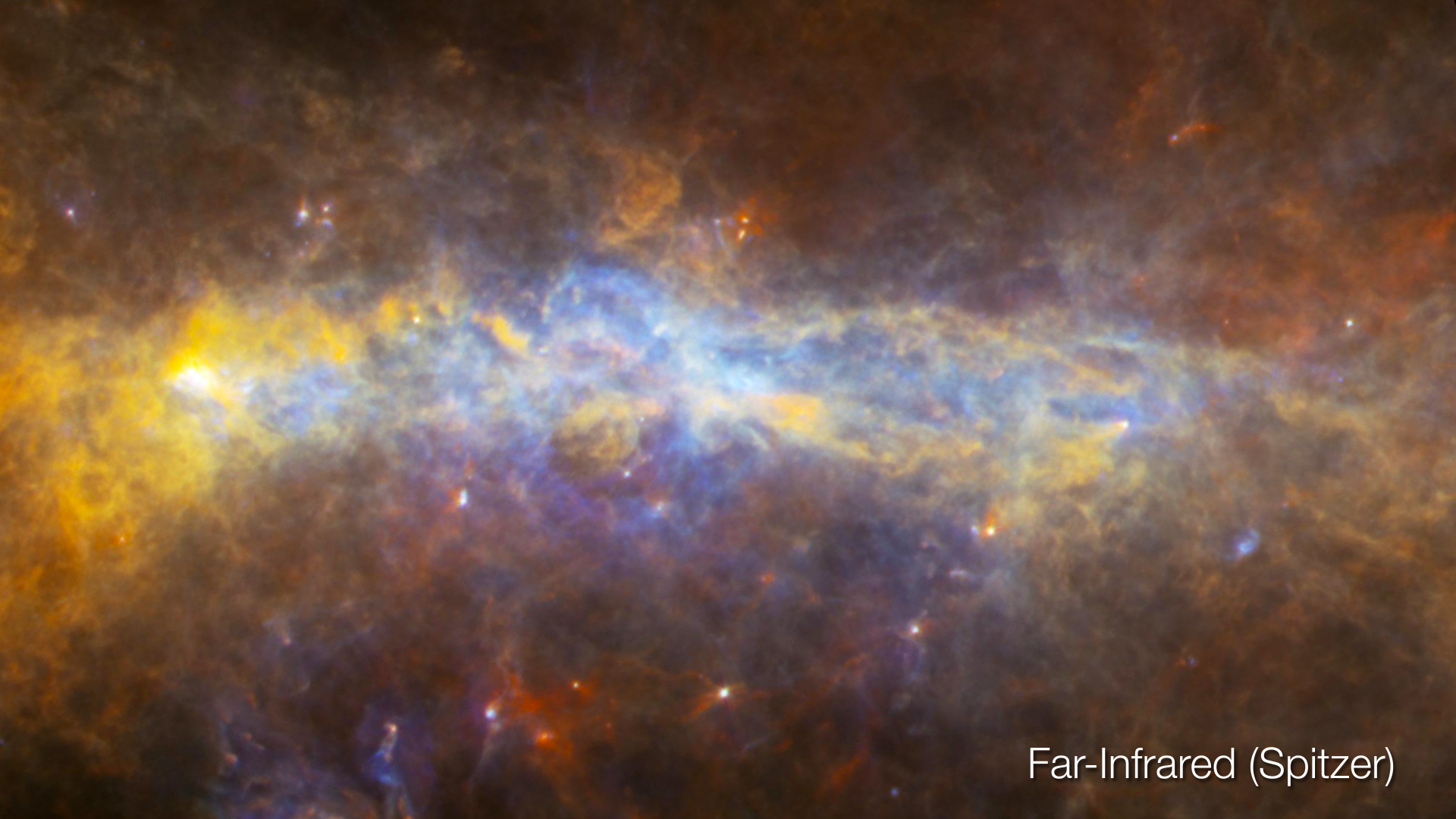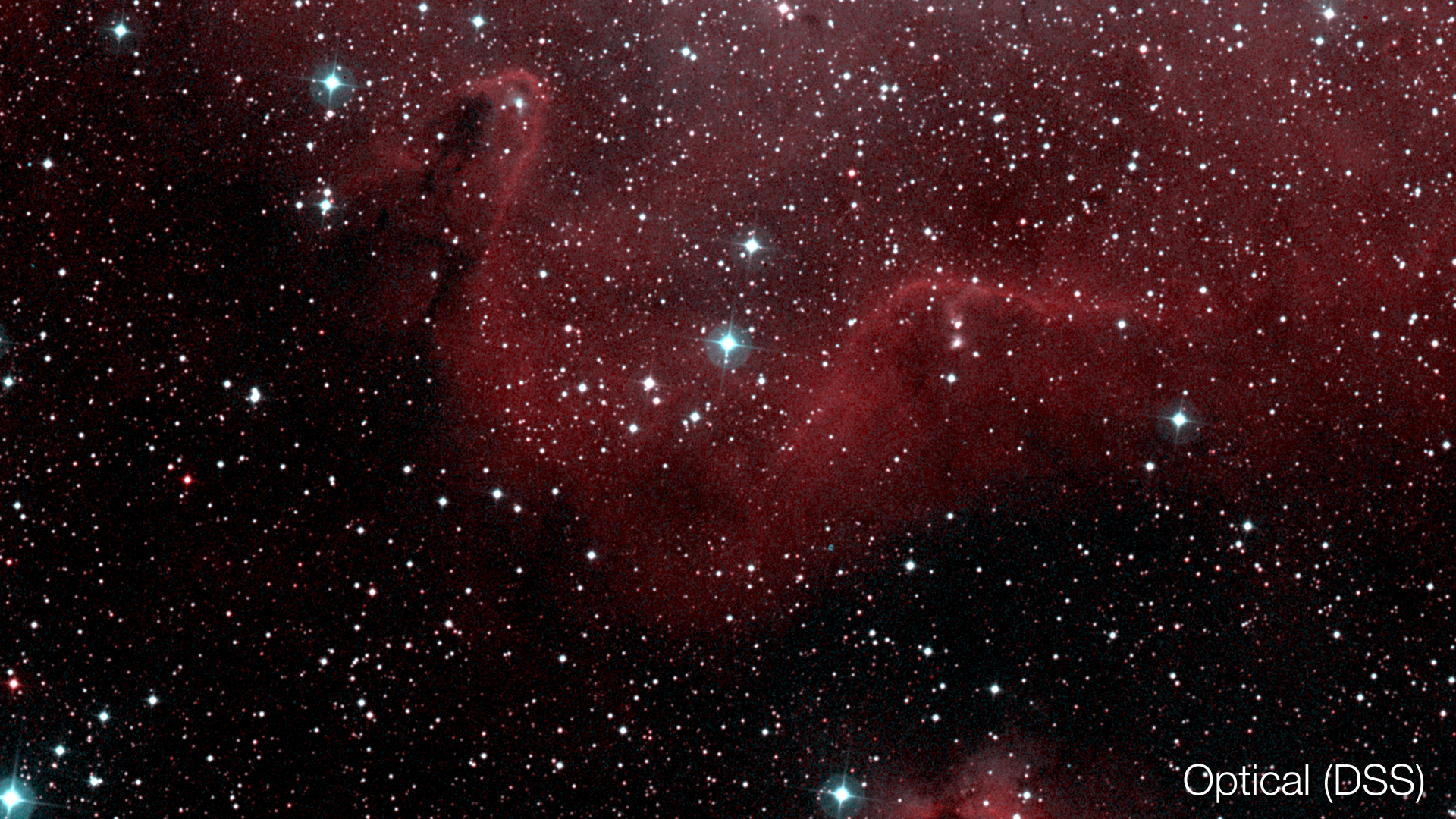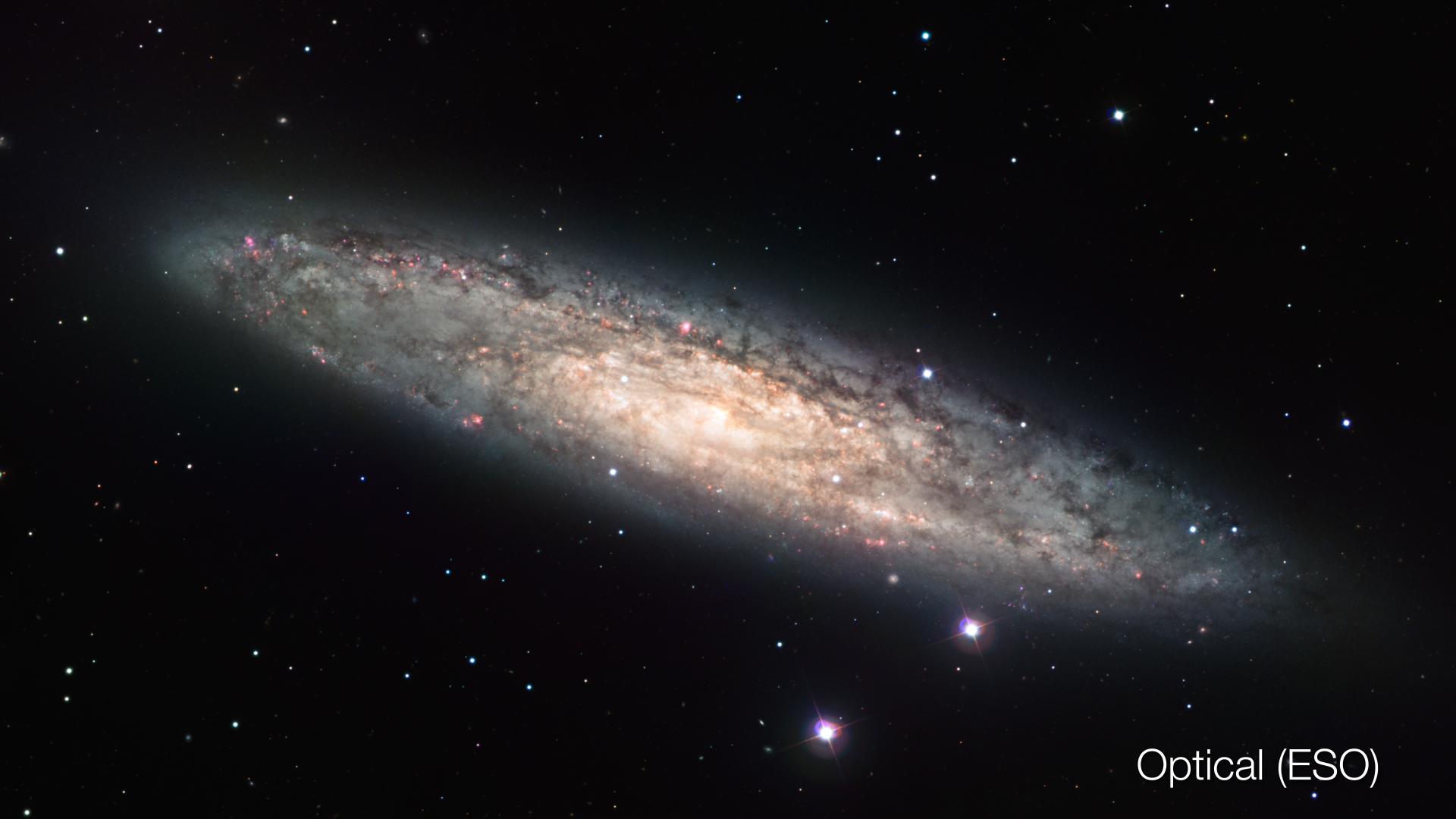Eagle Nebula: M16 Wide
This series of images shows the environment around the Pillars of Creation, the Eagle Nebula, Messier 16. The images reveal the nebula in optical, X-ray, mid-infrared, and far-infrared light.
The Pillars of Creation are revealed as the most persistent remnant of a once cocooned giant star forming nursery, although an even more slender pillar remains far to the left of the famous trio, and a massive promontory remains above them. All Pillars are aimed toward the massive star cluster to the upper right of the Pillars, most visible in X-ray (Chandra). These massive stars have blown open the nursery door. Their powerful stellar winds of charged particles blow away the gas and dust to create a window into the center of the cloud. In the visible (NOAO) image the cloud surface shines where the gas is illuminated, and is shadowed where the light source is blocked. The X-ray (Chandra+XMM) image shows exclusively the most massive stars, which generate the highest energy and powerful winds that excite the X-rays themselves.
In sharp contrast, the mid-infrared image (Spitzer) reveals the cloud material. The blue color represents reflected starlight, while the green color is hydrogen gas, emitting directly from the depths of the cloud. The red haze is warm hydrocarbon dust, filling the cavity, heated by the ultraviolet light from the nearby massive stars. The far-infrared (Herschel) image shows very cold dust, at a chilly few hundred degrees below freezing. It represents cloud material that has yet to coalesce into stars or be blown away. This image most closely resembles the cavern in which the massive stars have carved out space. Finally, the visible (ESO) image shows where the stars illuminate portions of the cloud and leave shadows.
This animation is the same as above, played twice as fast.

Herschel Far-Infrared image of Eagle Nebula

Spitzer Near-Infrared image of Eagle Nebula

ESO Optical image of Eagle Nebula

NOAO Optical image of Eagle Nebula

Chandra/XMM X-ray image of Eagle Nebula
Credits
Please give credit for this item to:
Video: NASA, ESA, and G. Bacon (STScI)
Optical image: ESO
Optical image: T.A. Rector (NRAO/AUI/NSF and NOAO/AURA/NSF) and B. A. Wolpa (NOAO/AURA/NSF)
Far-Infrared image: ESA/Herschel/PACS/SPIRE/Hill, Motte, HOBYS Key Programme Consortium
Near-Infrared image: NASA/JPL-Caltech/N. Flagey (IAS/SSC & A. Noriega-Crespo (SSC/Caltech)
X-ray image: NASA/CXC/U.Colorado/Linsky and ESA/XMM-Newton/EPIC/XMM-Newton-SOC/Boulanger
-
Visualizer
- Greg Bacon (STScI)
-
Image processing
- Travis A. Rector (University of Alaska Anchorage)
- B. A. Wolpa (NOAO/AURA/NSF)
- Tracey Hill (AIM Paris-Saclay)
- Frédérique Motte (AIM Paris-Saclay)
- Nicolas Flagey (NASA/JPL CalTech)
- Alberto Noriega-Crespo (NASA/JPL CalTech)
- Jeff Linsky (University of Colorado Boulder)
- F. Boulanger (XMM-Newton-SOC)
-
Technical support
- Leann Johnson (Global Science and Technology, Inc.)
Release date
This page was originally published on Monday, June 4, 2018.
This page was last updated on Monday, March 10, 2025 at 12:25 AM EDT.
Missions
This page is related to the following missions:Datasets used
-
[Spitzer Space Telescope]
ID: 690This dataset can be found at: http://www.spitzer.caltech.edu/
See all pages that use this dataset -
[Herschel Space Telescope]
ID: 808This dataset can be found at: http://www.esa.int/Our_Activities/Space_Science/Herschel
See all pages that use this dataset -
[Chandra: Telescope System]
ID: 1002 -
[National Optical Astronomy Observatory (NOAO)]
ID: 1003This dataset can be found at: https://www.noao.edu
See all pages that use this dataset -
[X-ray Multi-Mirror Mission (XMM-Newton)]
ID: 1004This dataset can be found at: https://heasarc.gsfc.nasa.gov/docs/xmm/xmmgof.html
See all pages that use this dataset -
[European Southern Observatory (ESO)]
ID: 1005This dataset can be found at: https://www.eso.org
See all pages that use this dataset
Note: While we identify the data sets used on this page, we do not store any further details, nor the data sets themselves on our site.





























